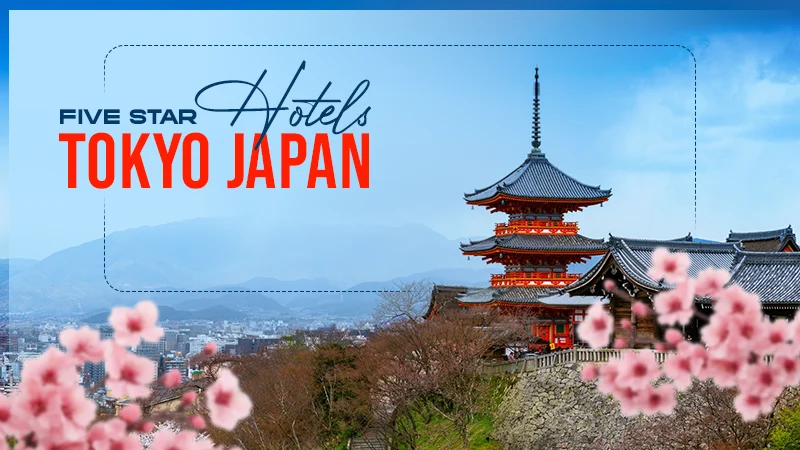- Overview of the Everest Base Camp Trek
- Day 1: Fly to Lukla and Trek to Phakding (2,610 m)
- Day 2: Phakding to Namche Bazaar (3,440 m)
- Day 3: Acclimatization Day in Namche Bazaar
- Day 4: Namche Bazaar to Tengboche (3,860 m)
- Day 5: Tengboche to Dingboche (4,410 m)
- Day 6: Acclimatization Day in Dingboche
- Day 7: Dingboche to Lobuche (4,910 m)
- Day 8: Lobuche to Gorak Shep (5,164 m) and Everest Base Camp (5,364 m)
- Day 9: Hike to Kala Patthar (5,545 m) and Descend to Pheriche (4,240 m)
- Day 10: Pheriche to Namche Bazaar
- Day 11: Namche Bazaar to Lukla
- Day 12: Fly Back to Kathmandu
- Acclimatization and Altitude Awareness
- Trek Difficulty and Preparation
- Best Time to Trek
- Alternative Routes and Extensions
- Conclusion: The Journey of a Lifetime
If you’ve ever dreamed of standing at the base of the world’s highest mountain, the Everest Base Camp Trek Itinerary is your roadmap to that adventure. This journey combines stunning landscapes, Sherpa culture, and the sense of achievement that comes from trekking in the heart of the Himalayas. Whether you’re a first-time trekker or a seasoned adventurer, understanding each day’s route, altitude, and highlights is essential for planning and acclimatizing safely.
This guide offers a detailed, day-by-day breakdown of the classic Everest Base Camp route, including acclimatization days, major landmarks, and trekking times—everything you need to know before you start your Everest base camp trekking experience.
Overview of the Everest Base Camp Trek
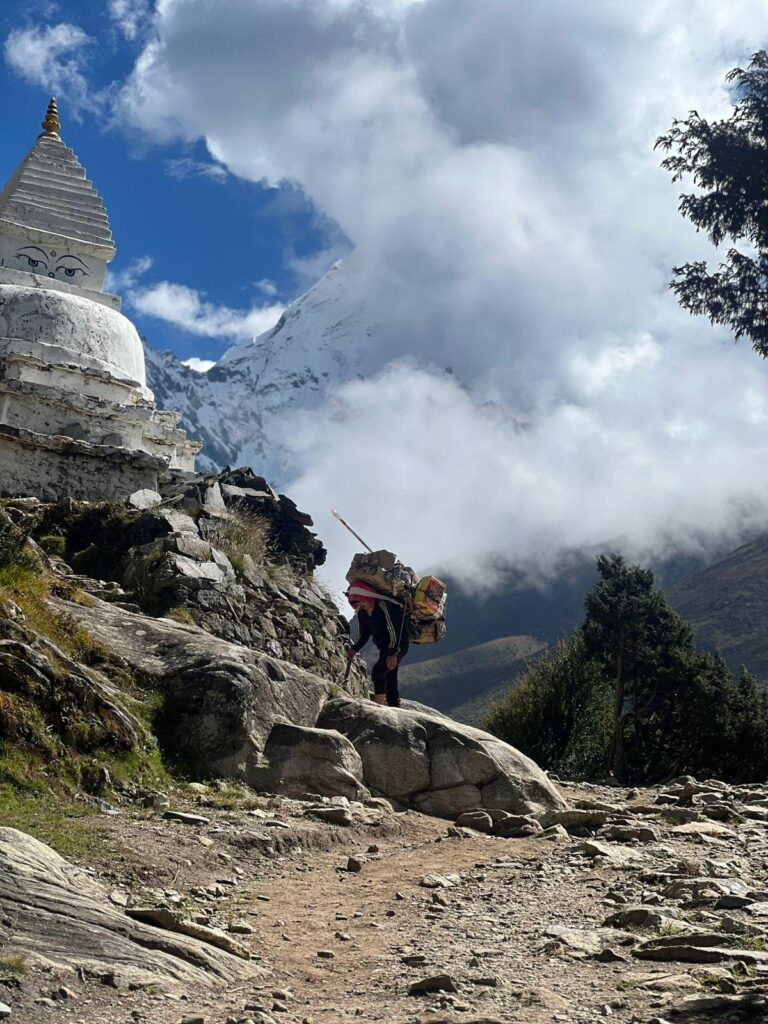
- Total Duration: 12–14 days
- Starting Point: Lukla (2,860 m)
- Highest Point: Kala Patthar (5,545 m)
- Trek Distance: Around 130 km round trip
- Difficulty: Moderate to challenging
- Best Seasons: March–May and September–November
This iconic trail follows the footsteps of legendary climbers, passing through lush forests, prayer-flag-lined suspension bridges, and glacier valleys. Along the way, you’ll stay in teahouses, acclimatize in charming Sherpa villages, and gradually approach the base of Mount Everest (5,364 m).
Day 1: Fly to Lukla and Trek to Phakding (2,610 m)
- Flight Duration: 30 minutes from Kathmandu
- Trek Duration: 3–4 hours
Your adventure begins with one of the most thrilling flights in the world—a short hop from Kathmandu to Lukla. The mountain air and crisp scenery will immediately set the tone for your journey. After landing, you’ll meet your guide and begin trekking through pine forests and small villages to reach Phakding.
Highlights:
- Scenic flight to Lukla
- First glimpse of the Dudh Koshi River
- Overnight in a cozy riverside teahouse
Day 2: Phakding to Namche Bazaar (3,440 m)
- Trek Duration: 6–7 hours
Today’s trail takes you across several suspension bridges, including the famous Hillary Bridge, and into Sagarmatha National Park. The final climb to Namche Bazaar is steep but rewarding—this Sherpa capital is a vibrant hub of cafés, shops, and mountain views.
Highlights:
- Enter Sagarmatha National Park
- Cross high suspension bridges
- First views of Everest (if weather permits)
Tip: Hydrate well and pace yourself—the elevation gain is significant today.
Day 3: Acclimatization Day in Namche Bazaar
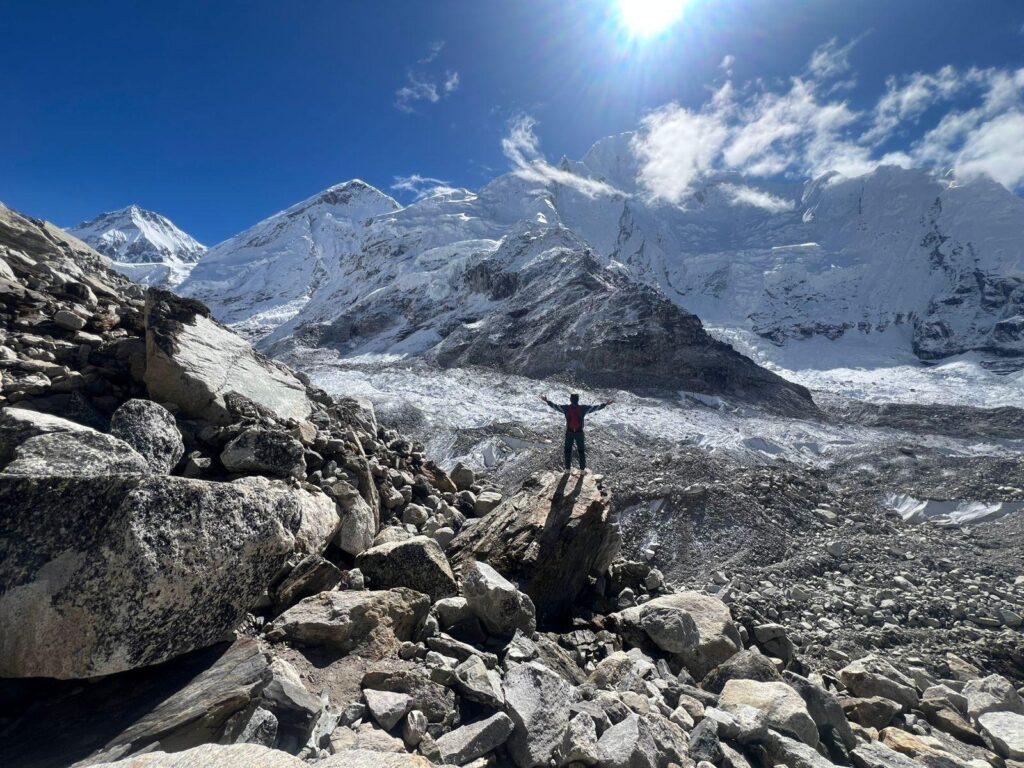
Altitude acclimatization is key to a successful Everest Base Camp journey. Spend the day exploring Namche Bazaar, visiting the Sherpa Museum, or hiking to the Everest View Hotel (3,880 m) for stunning panoramas of Everest, Lhotse, and Ama Dablam.
Highlights:
- Acclimatization hike to Everest Viewpoint
- Visit local markets and bakeries
- Learn Sherpa history and culture
Day 4: Namche Bazaar to Tengboche (3,860 m)
- Trek Duration: 5–6 hours
The trail to Tengboche offers breathtaking views of Ama Dablam, considered one of the most beautiful peaks in the Himalayas. You’ll pass through rhododendron forests before reaching Tengboche Monastery—the spiritual heart of the Khumbu region.
Highlights:
- Visit Tengboche Monastery
- Scenic views of Everest and Lhotse
- Peaceful evening surrounded by prayer chants
Day 5: Tengboche to Dingboche (4,410 m)
- Trek Duration: 5–6 hours
Descending through forests, you’ll cross the Imja Khola River and climb steadily toward Dingboche, a village surrounded by stone-walled fields. The terrain becomes more alpine, and the air thinner as you gain altitude.
Highlights:
- Cross suspension bridges over mountain rivers
- Panoramic views of Ama Dablam and Island Peak
- Transition into higher-altitude terrain
Day 6: Acclimatization Day in Dingboche
At this elevation, your body needs another day to adapt. A short hike to Nangkartshang Peak (5,083 m) provides panoramic views of Makalu and the Imja Valley. Spend the afternoon resting, hydrating, or enjoying apple pie at a local bakery.
Highlights:
- Acclimatization hike to Nangkartshang Peak
- Stunning views of Makalu and Lhotse
- Rest and prepare for higher altitudes
Day 7: Dingboche to Lobuche (4,910 m)
- Trek Duration: 5–6 hours
Today’s trail passes through the windswept Thukla Pass (4,830 m), where memorials honor climbers who lost their lives on Everest. The air grows thinner, and you’ll notice the landscape becoming stark and rugged as you reach Lobuche.
Highlights:
- Visit memorial chortens at Thukla Pass
- Dramatic mountain views
- Rest in Lobuche before the final push
Day 8: Lobuche to Gorak Shep (5,164 m) and Everest Base Camp (5,364 m)
- Trek Duration: 7–8 hours (round trip to EBC)
This is the day you’ve been waiting for. After a gradual climb to Gorak Shep, the last settlement before Everest Base Camp, you’ll continue to the glacier trail leading to the base of the world’s highest mountain. Prayer flags flutter against the icy Khumbu Icefall—an unforgettable sight.
Highlights:
- Reach Everest Base Camp (5,364 m)
- Witness the Khumbu Glacier and Icefall
- Celebrate your achievement with your team
Note: You don’t see the Everest summit from Base Camp; that view comes tomorrow from Kala Patthar.
Day 9: Hike to Kala Patthar (5,545 m) and Descend to Pheriche (4,240 m)
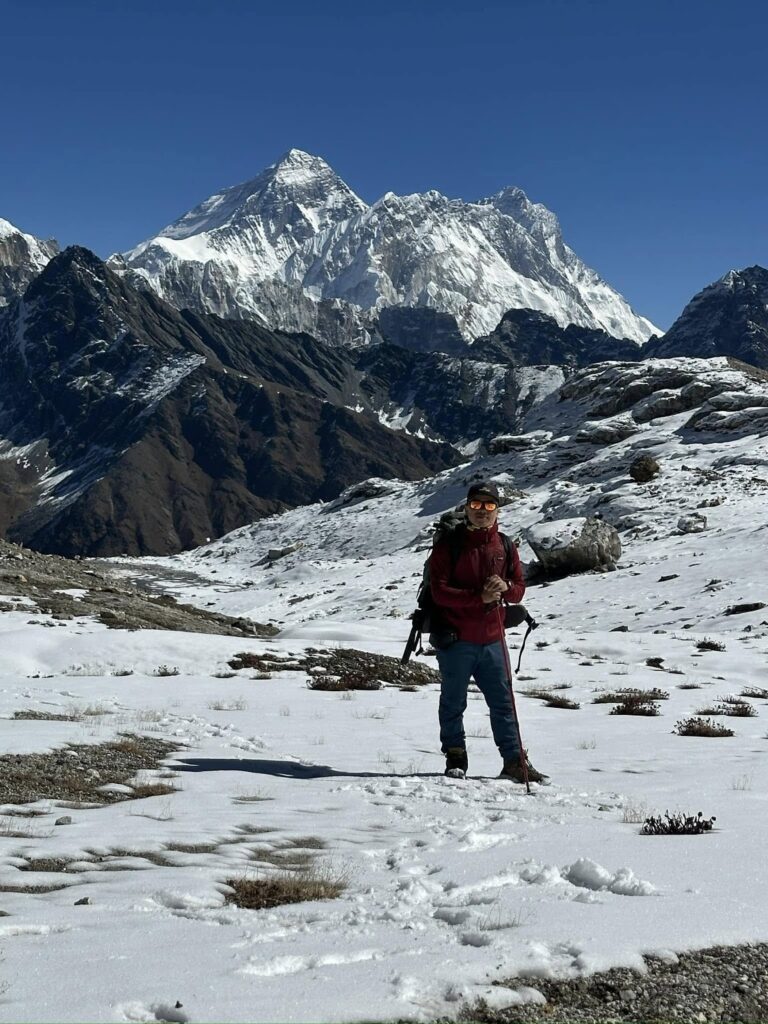
- Trek Duration: 6–7 hours
Wake up early for a pre-dawn ascent to Kala Patthar, where the sunrise paints Everest in golden hues. This is the ultimate viewpoint of the entire trek. After soaking in the views, descend to Pheriche for the night.
Highlights:
- Panoramic sunrise over Everest
- View of Nuptse, Lhotse, and Ama Dablam
- Gradual descent to thicker air
Day 10: Pheriche to Namche Bazaar
- Trek Duration: 6–7 hours
Retrace your steps through Tengboche and lush forests back to Namche Bazaar. The return feels easier as the air thickens, and the excitement of having completed Everest Base Camp keeps your spirits high.
Highlights:
- Descend through familiar trails
- Celebrate with coffee or pastries in Namche
- Hot shower and good sleep after high altitudes
Day 11: Namche Bazaar to Lukla
- Trek Duration: 6–7 hours
The final leg of your trek takes you back through suspension bridges and along the Dudh Koshi River to Lukla. It’s a long but satisfying day as you wrap up your Himalayan journey.
Highlights:
- Reflect on your adventure
- Enjoy a farewell dinner with your guide and porters
- Overnight in Lukla before flying back
Day 12: Fly Back to Kathmandu
- Flight Duration: 30 minutes
After breakfast, take an early flight back to Kathmandu. The mountains fade into the distance, but the memories of your trek will stay forever. Once in the city, you can enjoy a relaxing day or explore more of Nepal’s cultural sites.
Acclimatization and Altitude Awareness
The Everest Base Camp Trek Itinerary is designed for gradual altitude gain to prevent altitude sickness. Key acclimatization points—Namche Bazaar and Dingboche—help your body adjust.
Tips for managing altitude:
- Ascend slowly and hydrate regularly
- Avoid alcohol and smoking
- Listen to your guide and body
- Use Diamox (if recommended by your doctor)
Trek Difficulty and Preparation
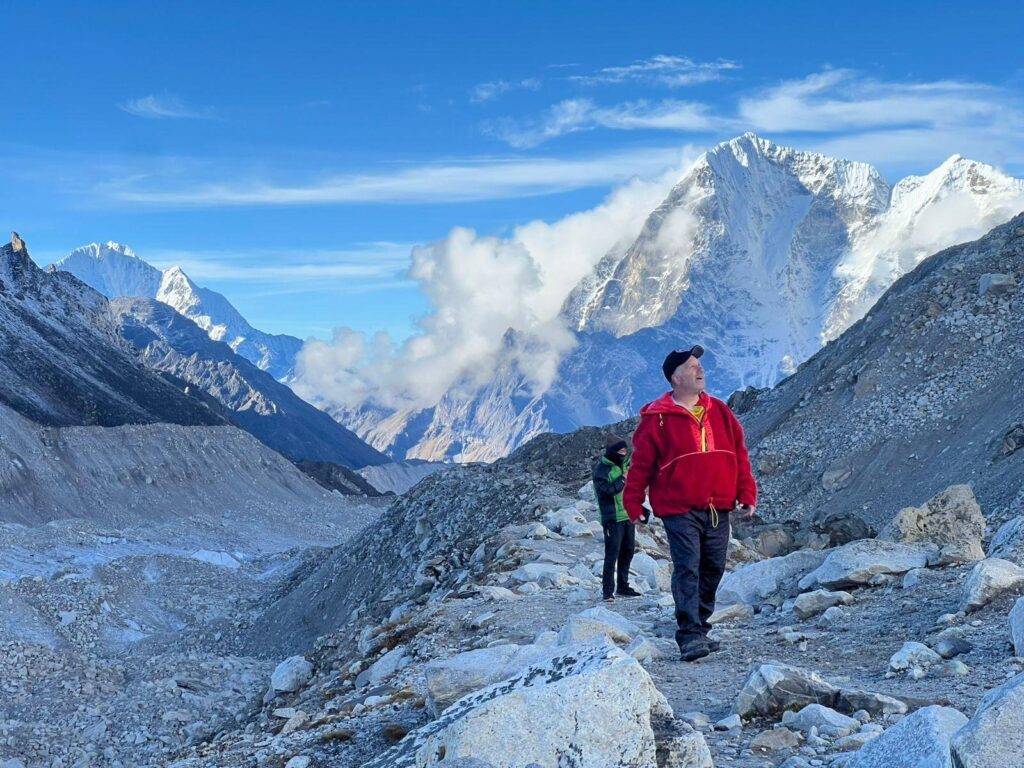
The trek doesn’t require technical climbing skills but does demand good physical fitness and mental endurance. You’ll hike 5–7 hours daily on varied terrain, often at high altitude.
Preparation tips:
- Train with cardio, strength, and stair climbing 6–8 weeks before
- Break in your trekking boots early
- Pack lightweight but warm clothing layers
- Carry essentials like water purification tablets, a headlamp, and snacks
This journey is challenging but achievable with preparation and determination—ideal for anyone passionate about adventure travel.
Best Time to Trek
The best months for the Everest Base Camp Trek are March–May (spring) and September–November (autumn). These seasons offer stable weather, clear skies, and stunning mountain visibility. Winter treks are possible for experienced hikers, though temperatures can drop below -15°C at higher altitudes.
Alternative Routes and Extensions
If you’re craving a quieter and more scenic variation, consider combining the base camp route with the Gokyo lake Trek, which crosses the Cho La Pass (5,420 m) and offers breathtaking views of turquoise lakes and Everest from Gokyo Ri. This route adds a few days but rewards you with unmatched serenity and fewer crowds.
Conclusion: The Journey of a Lifetime
Completing the Everest Base Camp Trek Itinerary is more than ticking off a bucket-list goal—it’s a transformative journey through the heart of the Himalayas. Each day brings new vistas, challenges, and moments of connection—with the mountains, the culture, and yourself.
Whether you choose the classic route or extend it with the Gokyo lake Trek, one thing is certain: this experience will stay with you long after you’ve returned home. Lace up your boots, respect the altitude, and get ready for one of the most awe-inspiring adventures on Earth.





